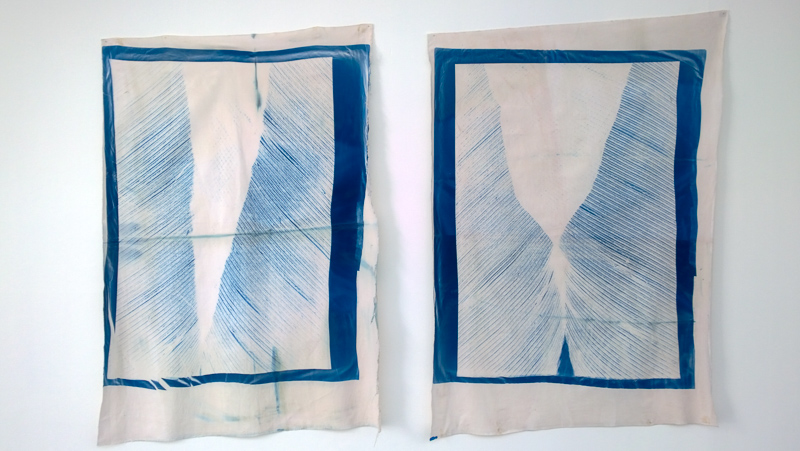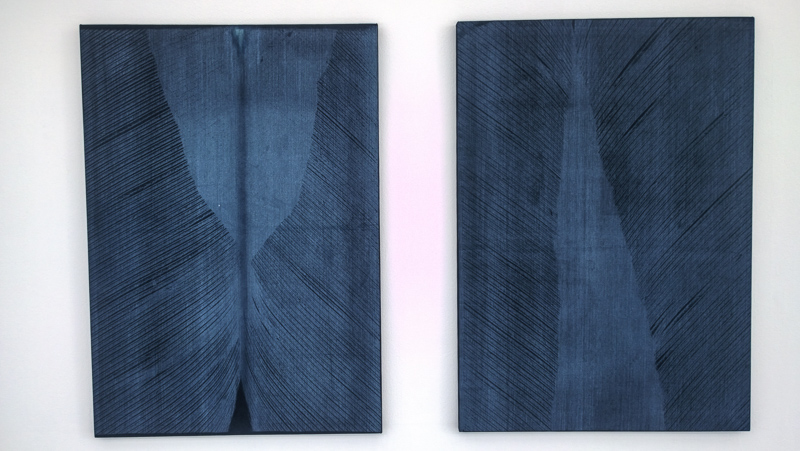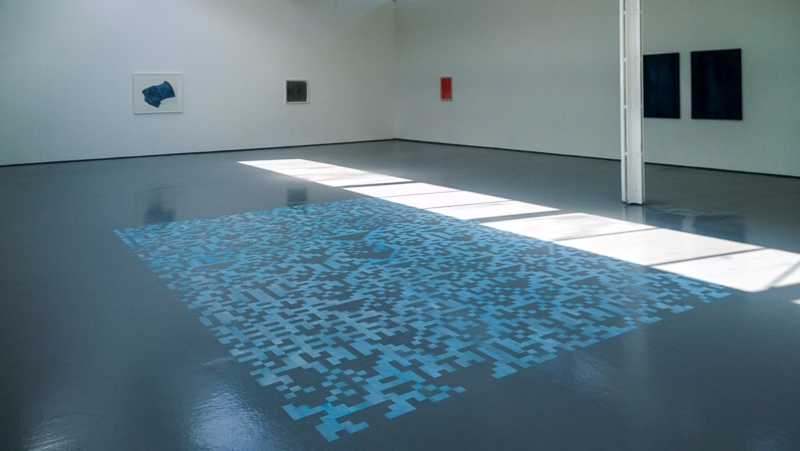Copying Errors
 Copying Errors by Glasgow-based artist Duncan Marquiss is the latest solo exhibition to take over the main galleries at DCA. Marquiss is a former Fine Art Printmaking student of DJCAD, who graduated in 2001 and went on to complete his MFA at Glasgow School of Art in 2005. The title of the show, which comprises film, drawing and print, refers both to the artist’s belief that it is the errors and deviations revealed in scientific analysis of genetics, and the mistakes and accidental discoveries in his own manipulation of materials, that are most telling and beautiful.
Copying Errors by Glasgow-based artist Duncan Marquiss is the latest solo exhibition to take over the main galleries at DCA. Marquiss is a former Fine Art Printmaking student of DJCAD, who graduated in 2001 and went on to complete his MFA at Glasgow School of Art in 2005. The title of the show, which comprises film, drawing and print, refers both to the artist’s belief that it is the errors and deviations revealed in scientific analysis of genetics, and the mistakes and accidental discoveries in his own manipulation of materials, that are most telling and beautiful.
The first work most visitors will encounter is the short film Evolutionary Jerks & Gradualist Creeps in Gallery 1, completed this year by Marquiss as a result of his receiving the prestigious Margaret Tait Award in 2015. The 38-minute film features interview footage with evolutionary biologists revealing their research and personal interests, including Evolution, Biology, Economics and Musicology. These motifs emerge, converge, cross over and influence each other in the aim to discover a coherent pattern and predictive algorithm to make sense of the chaos of the world around us.
Marquiss’s editing and cross-referencing technique of disparate subjects is intriguing, revealing some of his own research methods and inspiration behind his own art practice. However, despite the artists’ creative editing and inclusion of some personal footage of place, Evolutionary Jerks & Gradualist Creeps is a tight, academic and theoretical piece of work. One can’t help wondering if the commission may have been more accessible and open to individual interpretation if Marquiss had balanced the gravity and length of the scientist’s spoken dialogue with more of his own unique, non-verbal observations of the world and attention to the musical score.

After the intensity of the film in Gallery 1, it is a relief to walk into the high-ceilinged open room of the second Gallery. Sunlight pours in through the skylights above, enhancing the hue and hum of the print works on the wall, and there is an immediate sense of the artworks here being integral to, and conceived specifically for, this space. In the centre of the gallery floor, a sky-blue rectangle shimmers like the surface of a swimming pool, anchoring the prints and drawings that float on the surrounding walls. On closer inspection, the work reveals itself to be a pixelated pattern made from interconnected squares of chalk-covered PVA printed directly onto the gallery floor. These everyday materials lend a beautiful tactile quality to the piece, the matte white of the PVA glue and pale powder blue chalk, together create an ungraspable, fluid sensation, contrasting with the modular pattern. Flanking either side of this is Signals, two large, rich blue cyanotypes printed on torn, white cotton, showing the ghostly image of large feathers.

This tactility and joy in the materiality of his chosen media continues in the artist’s wall based prints. Using a mixture of charcoal, chalk, pencil, vegetable oil, tracing paper and fabric, a quiet but strong physicality of the maker is apparent. The images made on these grounds are rubbings, wall textures and marks that feel like captured moments of everyday life. The hard roughness of a concrete walkway beneath our feet, the weave of denim clothing on our legs, or the intimately observed beauty of graphite on paper in a school jotter.
Marquiss’s use of everyday materials means any visitor can recognize and relate to their language. Copying Errors reveals an artists’ fascination with the subtle feelings and textures of simply “being” in the world. However, like its unassuming title, the simplicity of the minimal installation of these works belies years of study, observation and drawing connections between disparate worlds. This is the agency in the role of the artist in contemporary society, to observe and connect the similarities between us, not to judge the differences as a problem to be fixed.
Helen Angell-Preece

Leave a Reply